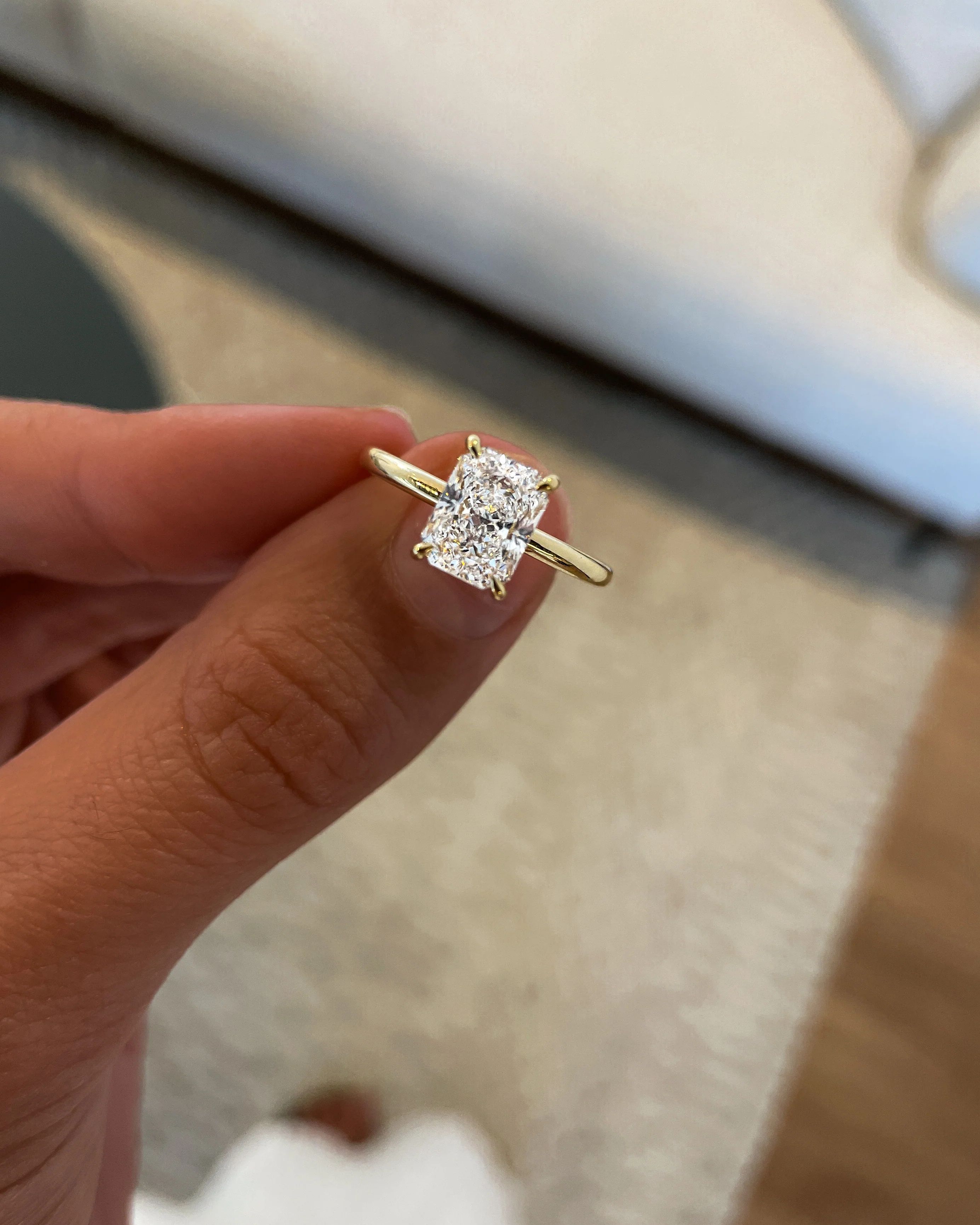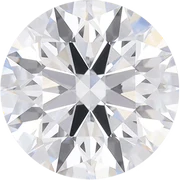

When selecting a diamond engagement ring, you want to be sure of every little detail, so it’s natural to be concerned about diamond fluorescence and how it may, or may not, negatively impact the cut, clarity, colour and carat (the 4Cs) of your stone.
Diamond fluorescence refers to the soft glow that may be seen when a diamond is under ultra-violet (UV) light (i.e., sunlight or the kind of black light commonly found in a night club). Approximately 30% of natural diamonds have a degree of fluorescence. This usually displays as a blue glow but in rare cases, it can be white, yellow, green or red. Though it is unknown what exactly causes it, fluorescence comes from the inclusion of trace elements naturally contained within a diamond during the carbon crystallisation process.
Fluorescence is one of the only ways to distinguish between a natural and lab grown diamond. It is extremely rare for a lab grown diamond to display any fluorescence.
The GIA diamond fluorescence scale
Frequent nightclubs? Fluorescence is rarely seen unless a diamond is under heavy UV lighting (black lighting). Take a look below and click the “on and off” button to view how a diamond will brightly illuminate when viewed under a UV light!
The GIA grades the fluorescence of diamonds using the following scale:

None
No fluorescence, no influence on colour.

Faint
Weak fluorescence, not a significant influence on the colour (barely perceptible).

Medium
Average fluorescence, small influence.

Strong
Strong fluorescence, substantial colour influence.

Very Strong
Very strong fluorescence, substantial colour influence.
How fluorescence affects a diamond’s value
In a small number of diamonds, very strong fluorescence can create a cloudy appearance. This reduces the value of the diamond. In other diamonds, the blue fluorescent glow can offset the yellow tint found in diamonds of I-M colour, making them appear up to one grade whiter and increasing their value.
It may be worth exercising caution if a colourless diamond with a grade of D-F presents fluorescence under UV light. Due to their lack of colour, they do not possess enough colour to offset fluorescence. For this reason, the fluorescence is labelled a flaw and the diamond is of lesser value.

The difference between mined and lab grown diamond fluorescence
When it comes to sustainable lab grown diamonds, you don’t have to worry about fluorescence: lab grown diamonds rarely display fluorescence.
That said, diamond fluorescence should not be a huge factor in the purchase of a diamond, especially when the effects are negligible. According to studies performed by the GIA, fluorescence has no visual impact on a diamond’s appearance or structural integrity. In the end, the four C’s are much more important than fluorescence when purchasing a diamond.
However, when it comes to lab grown diamonds, it is nice that fluorescence need not be a deciding factor in your choice of stone. Instead, you can focus on cut, clarity, colour and carat, and the overall style of your diamond engagement ring.
Cullen Jewellery, where love and craftsmanship come together
Made of pure carbon, a lab grown diamond offers the exact same sparkle and durability as a mined diamond, allowing you to enjoy the diamond of your dreams without the exorbitant price tag, ethical dilemmas, or quality compromises. Cullen Jewellery lab grown diamonds are certified 100% carbon neutral by Clear Neutral and made sustainably in Australia’s vibrant fashion capital.
Explore Our Lab Grown Diamond Engagement Rings